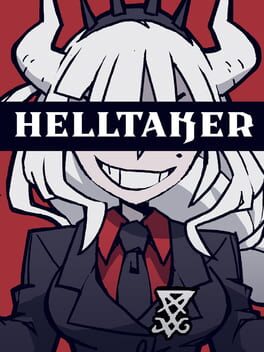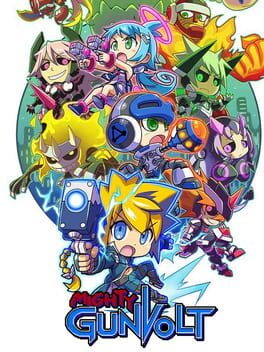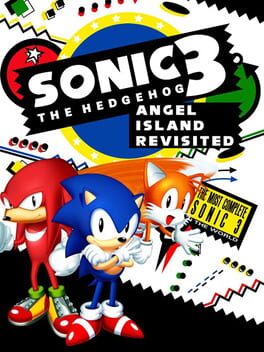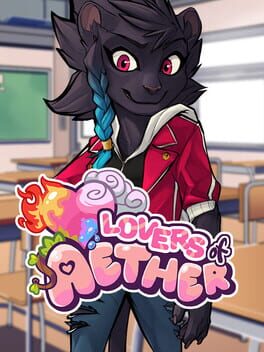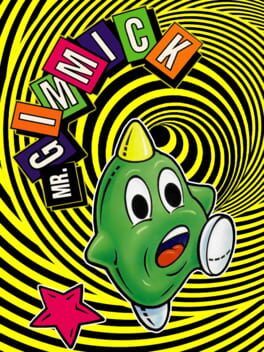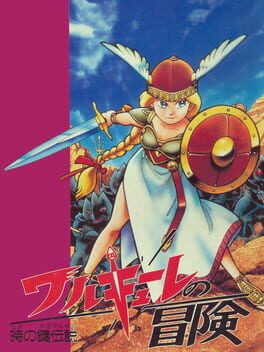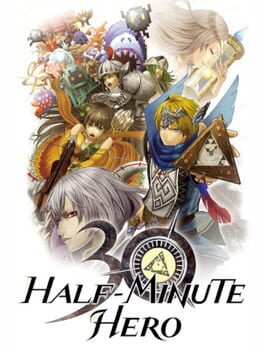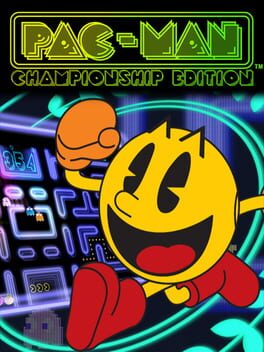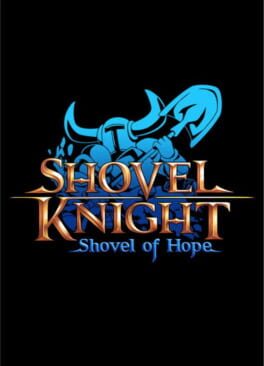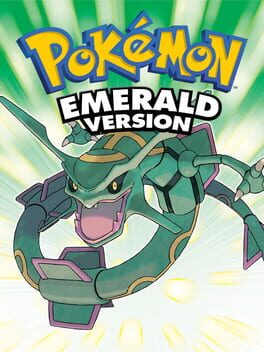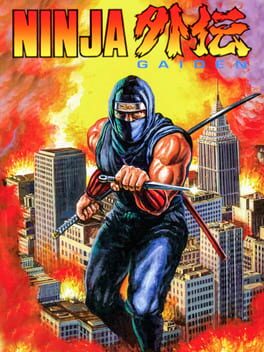mellorine
2020
2014
For years - probably as many as six - I'd completely dismissed this game. It just didn't grab me at all, and I'd always dropped the game shortly into the Dark World.
Back in May, I revisited the game and completed my first complete playthrough, forcing myself through... with a guide, if so be it. I disliked it, albeit less than I'd used to. I had difficulty finding heart pieces, and even how to get to the Dark World dungeons... I decided at the time that it's a "perfectly fine game for those who've already taken the time to get used to it" - which is something I still feel about the original Legend of Zelda, but for vastly different reasons.
To some extent, I think I ended up confirming my own thoughts with this playthrough. I was generally familiar with how the game worked better, like the various warp points across Hyrule that wasn't just the Hyrule Castle door; or how you could choose your own order for the dungeons for the most part, postponing Skull Woods for as long as possible so that you're as well-equipped for what it throws at you.
(It's also worth noting that once you're familiar with the dungeon layouts, they're often still just as dungeon crawl-y and straightforward arcade action as the original Legend of Zelda - which I really appreciated now that I didn't find myself completely lost.)
But another key difference is that I think I gave the game time to explain itself as I actually tried exploring around Hyrule as comprehensively as I could with all the gear I had at any given moment, actively looking for potential secrets and shortcuts.
I think LttP's 24 heart pieces and 2 optional items are well-intended, but a little too sparse for what feels like an overworld at least four times as large as the original's, including the Dark World, with considerably less instant payout. Still, I went for them as diligently as I could, realized just how vastly the blue medicine obsoletes having bottled Fairies late into the game, learned that the maps were generally given out early in dungeons and became better at reading them, and made good use of the Cane of Byrna to give myself an easier, more fun time.
Essentially, I started playing Link to the Past almost the same way I played the original Legend of Zelda, and exactly the same way I went through my very first complete run of Link's Awakening (2019) this year.
And with that patience and open-mindedness, Link to the Past reached out to meet me halfway in return.
I can't say I love it, but I like Link to the Past now. It has its place in the series just as much as the games before and after it, even if my own troubled history with it will sometimes convince me otherwise.
Back in May, I revisited the game and completed my first complete playthrough, forcing myself through... with a guide, if so be it. I disliked it, albeit less than I'd used to. I had difficulty finding heart pieces, and even how to get to the Dark World dungeons... I decided at the time that it's a "perfectly fine game for those who've already taken the time to get used to it" - which is something I still feel about the original Legend of Zelda, but for vastly different reasons.
To some extent, I think I ended up confirming my own thoughts with this playthrough. I was generally familiar with how the game worked better, like the various warp points across Hyrule that wasn't just the Hyrule Castle door; or how you could choose your own order for the dungeons for the most part, postponing Skull Woods for as long as possible so that you're as well-equipped for what it throws at you.
(It's also worth noting that once you're familiar with the dungeon layouts, they're often still just as dungeon crawl-y and straightforward arcade action as the original Legend of Zelda - which I really appreciated now that I didn't find myself completely lost.)
But another key difference is that I think I gave the game time to explain itself as I actually tried exploring around Hyrule as comprehensively as I could with all the gear I had at any given moment, actively looking for potential secrets and shortcuts.
I think LttP's 24 heart pieces and 2 optional items are well-intended, but a little too sparse for what feels like an overworld at least four times as large as the original's, including the Dark World, with considerably less instant payout. Still, I went for them as diligently as I could, realized just how vastly the blue medicine obsoletes having bottled Fairies late into the game, learned that the maps were generally given out early in dungeons and became better at reading them, and made good use of the Cane of Byrna to give myself an easier, more fun time.
Essentially, I started playing Link to the Past almost the same way I played the original Legend of Zelda, and exactly the same way I went through my very first complete run of Link's Awakening (2019) this year.
And with that patience and open-mindedness, Link to the Past reached out to meet me halfway in return.
I can't say I love it, but I like Link to the Past now. It has its place in the series just as much as the games before and after it, even if my own troubled history with it will sometimes convince me otherwise.
To begin: Angel Island Revisited is a fantastic remaster, with quality-of-life changes and improvements that I can never imagine playing Sonic 3 without ever again. From the subtle visual improvements, sheer customizability, remastered audio, the Drop Dash! - Sonic 3 AIR is easily the definitive version of this game, and will always be, especially now that it has mod support.
But I think AIR is also the definitive version of a game that's slightly obsoleted by Mania in almost every aspect.
Take the starting Angel Island, for example: secret items like the ring and speed monitors near the start of Act 1 or the rings and invincibility under the pushable rock feel too disconnected from the flow of the level design in ways that Green Hill - both in its Sonic 1 and Mania renditions - never suffered from.
Big Ring distribution is also weighted in a way that I feel is unbalanced: Angel Island and Hydrocity have about seven in total if you look closely for them; Marble Garden and Carnival Night hand them out like candy; and starting from Ice Cap and into the rest of the game are too sparse - while Green Hill and Chemical Plant in Mania also total about seven or eight in Mania as well, the Big Rings are distributed more evenly across the game and placed in less obtuse ways that I found myself still finding Big Rings all the way into Metallic Madness.
Special Stages and Bonus Stages are also unquestionably better in Mania in my opinion: while I think the Special Stages need no explanation, I've found the three bonus stages of Sonic 3 too pace-breaking, especially considering that two of them let players potentially get any shield, and the other has the potential to draw rings from the player instead.
Maybe this is my bias towards pinball, but I enjoy how Trap Tower is paced, letting players just play the crane game once and leave if they choose, or letting them stay literally as long as they want in a minigame that's amazing in its own right.
The one thing I might say Sonic 3 still has over Mania is its sense of storytelling and narrative consistency... but it's not enough to tip the scales over for me when Mania has much more expressive animation, much more consistent level design; as well as better setpieces and moments like the Heavy Magician fight, Eggman's battles involving gachapon and Puyo of all things, and the entirety of the impossible-to-dislike Studiopolis Zone.
It stands in stark contrast to my actual favorite Genesis-era Sonic game: Sonic CD. Sure, it might be a bit janky compared to Sonic 3, and its mechanics and level design may not be for everyone, but it sets out to accomplish things that no other game in the series even attempted ever again - even Mania only implements these things on a purely cosmetic level, its two CD levels being almost completely reconstructed using the level gimmicks as a baseline.
I think Sonic 3 is still a very good game, all things considered - but it's a game I'd much rather replay Mania than revisit. Angel Island Revisited at least brings it up to the same level of polish that it could be up to a matter of personal preference...
But Mania has captured my heart in a way I think Sonic 3 never has in any form.
But I think AIR is also the definitive version of a game that's slightly obsoleted by Mania in almost every aspect.
Take the starting Angel Island, for example: secret items like the ring and speed monitors near the start of Act 1 or the rings and invincibility under the pushable rock feel too disconnected from the flow of the level design in ways that Green Hill - both in its Sonic 1 and Mania renditions - never suffered from.
Big Ring distribution is also weighted in a way that I feel is unbalanced: Angel Island and Hydrocity have about seven in total if you look closely for them; Marble Garden and Carnival Night hand them out like candy; and starting from Ice Cap and into the rest of the game are too sparse - while Green Hill and Chemical Plant in Mania also total about seven or eight in Mania as well, the Big Rings are distributed more evenly across the game and placed in less obtuse ways that I found myself still finding Big Rings all the way into Metallic Madness.
Special Stages and Bonus Stages are also unquestionably better in Mania in my opinion: while I think the Special Stages need no explanation, I've found the three bonus stages of Sonic 3 too pace-breaking, especially considering that two of them let players potentially get any shield, and the other has the potential to draw rings from the player instead.
Maybe this is my bias towards pinball, but I enjoy how Trap Tower is paced, letting players just play the crane game once and leave if they choose, or letting them stay literally as long as they want in a minigame that's amazing in its own right.
The one thing I might say Sonic 3 still has over Mania is its sense of storytelling and narrative consistency... but it's not enough to tip the scales over for me when Mania has much more expressive animation, much more consistent level design; as well as better setpieces and moments like the Heavy Magician fight, Eggman's battles involving gachapon and Puyo of all things, and the entirety of the impossible-to-dislike Studiopolis Zone.
It stands in stark contrast to my actual favorite Genesis-era Sonic game: Sonic CD. Sure, it might be a bit janky compared to Sonic 3, and its mechanics and level design may not be for everyone, but it sets out to accomplish things that no other game in the series even attempted ever again - even Mania only implements these things on a purely cosmetic level, its two CD levels being almost completely reconstructed using the level gimmicks as a baseline.
I think Sonic 3 is still a very good game, all things considered - but it's a game I'd much rather replay Mania than revisit. Angel Island Revisited at least brings it up to the same level of polish that it could be up to a matter of personal preference...
But Mania has captured my heart in a way I think Sonic 3 never has in any form.
2019
1992
I like reading about Gimmick. I like reading about how it was developed and how its soundtrack was written. I like watching it, I like watching people talk about it - especially illusory wall's Retro Games Dissected video on the game.
I love the way Gimmick sounds, and I love the way it looks. It's obviously a passion project, but it's also a one last hurrah for the Famicom, a showcase of what can be done out of this system that was originally made almost ten years ago (at the time of Gimmick's release) to play ports of Donkey Kong.
But I don't like playing it. The star as a weapon is cumbersome and tricky to manage, even if it's a great concept; I think the game didn't need quite as much momentum or traction to its controls; a maximum of 4 health feels a little unfair; and getting the secret items can be challenging to the point of absurdity.
So do I like Gimmick?
Geez, I don't know! Do I?
I love the way Gimmick sounds, and I love the way it looks. It's obviously a passion project, but it's also a one last hurrah for the Famicom, a showcase of what can be done out of this system that was originally made almost ten years ago (at the time of Gimmick's release) to play ports of Donkey Kong.
But I don't like playing it. The star as a weapon is cumbersome and tricky to manage, even if it's a great concept; I think the game didn't need quite as much momentum or traction to its controls; a maximum of 4 health feels a little unfair; and getting the secret items can be challenging to the point of absurdity.
So do I like Gimmick?
Geez, I don't know! Do I?
It'd be hypocritical of me to complain that Final Fantasy 1 and Dragon Quest 1 on NES were too cryptic for me to enjoy, and then go on to brace myself through the entirety of this game just because it's a Namco game.
But you know what wouldn't be hypocritical? Finding this game difficult and cryptic, but liking The Legend of Zelda!
But you know what wouldn't be hypocritical? Finding this game difficult and cryptic, but liking The Legend of Zelda!
2009
The main mode feels like they tried to squeeze an JRPG into an episodic, almost WarioWare-like format but falls flat because of aspects of it just not meshing well together, like the short standalone quests design, branched paths, grinding... I don't know, maybe it works for some people, but it doesn't work for me.
I've seen the Hero 3 mode can get really intense, but it's a shame that you can't play it without playing through Hero 30.
I've seen the Hero 3 mode can get really intense, but it's a shame that you can't play it without playing through Hero 30.
2007
So I have to preface everything by saying that the turrets kept me stuck on this game for two years.
I'm not kidding - as a person almost completely new to first person games, as someone not used to being shot at, the turrets terrified me. I found myself stuck against them, too afraid to proceed.
It was only when a friend gifted me the sequel and told me that the turrets don't deal much damage that I found the courage to face them head-on when I had to - of course, still with as much portal warping as possible to avoid being shot at.
I'd say if Portal has a problem, it's... this. I can't possibly be the only person to have been too fainthearted with the turrets, especially considering that this game was, to my knowledge, one of the most mainstream non-Nintendo games at one point.
But once you can put that aside, it's amazing how the game leaves so much of itself for you to figure out on your own, remains so thoroughly possible throughout and makes you feel so accomplished for figuring everything out - all by yourself!
Maybe because it's because I haven't played much of Half-Life, but the game leaves me with lots of questions even after completing the story mode. What is Aperture Science, other than being Black Mesa's rival? What was the portal gun made for? What's with GLaDOS? IS she still alive? Who's the person who's been writing all over the facility? Did they have a portal gun too?
The game's full of intrigue, and I love it. I don't think I'll get over my first scary impressions of it anytime soon, but my most recent playthrough was an absolutely wonderful one.
I'm not kidding - as a person almost completely new to first person games, as someone not used to being shot at, the turrets terrified me. I found myself stuck against them, too afraid to proceed.
It was only when a friend gifted me the sequel and told me that the turrets don't deal much damage that I found the courage to face them head-on when I had to - of course, still with as much portal warping as possible to avoid being shot at.
I'd say if Portal has a problem, it's... this. I can't possibly be the only person to have been too fainthearted with the turrets, especially considering that this game was, to my knowledge, one of the most mainstream non-Nintendo games at one point.
But once you can put that aside, it's amazing how the game leaves so much of itself for you to figure out on your own, remains so thoroughly possible throughout and makes you feel so accomplished for figuring everything out - all by yourself!
Maybe because it's because I haven't played much of Half-Life, but the game leaves me with lots of questions even after completing the story mode. What is Aperture Science, other than being Black Mesa's rival? What was the portal gun made for? What's with GLaDOS? IS she still alive? Who's the person who's been writing all over the facility? Did they have a portal gun too?
The game's full of intrigue, and I love it. I don't think I'll get over my first scary impressions of it anytime soon, but my most recent playthrough was an absolutely wonderful one.
I think this is possibly the most pure, unadulterated form of Pac-Man that exists outside of the original game.
Split second decisions and actions based on current ghost positioning and behavior is just as important here as in the original, both when avoiding and chasing after ghosts.
It's purer than anything that happened between it and the original Pac-Man, and purer than anything since: none of the randomized aspects of Ms. Pac-Man; none of... whatever that was in Super Pac-Man and Pac & Pal; none of the screen limitations of Pac-Mania; far better ghost behaviour, mechanics and level design than any of the Pac-Man World games' mazes; none of the gimmicks and added mechanics of the Arrangement games; none of the ghost train features from the two Championship Edition games that followed, be it DX's mostly superficial aesthetics of it or 2's genuinely clever use of the mechanic.
It's just Pac-Man, dots, ghosts, fruit that increasingly become more rewarding, a dot combo that resets on death, five minutes and you.
Maybe I sound like a purist, and, well - I don't dislike the other "impure" games I've listed above. In fact, I love Championship Edition 2 much more as a whole, and the fanmade, M2-endorsed NES demake of this game is so much more fun to play as a whole.
But Action Button is right. This is the closest we've gotten to a perfected version of Pac-Man in terms of its design philosophy: it's Toru Iwatani's mic drop, his one last gift to video game players.
And it's such a shame that it's no longer officially available in its original form on any currently supported system.
Split second decisions and actions based on current ghost positioning and behavior is just as important here as in the original, both when avoiding and chasing after ghosts.
It's purer than anything that happened between it and the original Pac-Man, and purer than anything since: none of the randomized aspects of Ms. Pac-Man; none of... whatever that was in Super Pac-Man and Pac & Pal; none of the screen limitations of Pac-Mania; far better ghost behaviour, mechanics and level design than any of the Pac-Man World games' mazes; none of the gimmicks and added mechanics of the Arrangement games; none of the ghost train features from the two Championship Edition games that followed, be it DX's mostly superficial aesthetics of it or 2's genuinely clever use of the mechanic.
It's just Pac-Man, dots, ghosts, fruit that increasingly become more rewarding, a dot combo that resets on death, five minutes and you.
Maybe I sound like a purist, and, well - I don't dislike the other "impure" games I've listed above. In fact, I love Championship Edition 2 much more as a whole, and the fanmade, M2-endorsed NES demake of this game is so much more fun to play as a whole.
But Action Button is right. This is the closest we've gotten to a perfected version of Pac-Man in terms of its design philosophy: it's Toru Iwatani's mic drop, his one last gift to video game players.
And it's such a shame that it's no longer officially available in its original form on any currently supported system.
Shovel Knight was to be a quadrology, a series of games revolving around the same general story from multiple perspectives... and to that end, before they did anything too wild with the idea, they needed to do something that I think only Nintendo had accomplished up to that point.
Look at Mario: he had established so elegantly a gameplay, a cast, and a story so malleable that it could be supported to fit anything they could possibly desire. Paper Mario so convincingly fits the general idea of the platformers into the form of a JRPG; Yoshi, introduced in Super Mario World proved so capable that they continue to make games all about him and his species; and Wario manages to take everything Super Mario had done, deconstruct it and still somehow manage to make it all work.
From his footsteps would other franchises and series also take root - including Sonic the Hedgehog, and platformers as a whole, such as Mega Man and Castlevania.
And Yacht Club, in the year 2014, made a Mario to call their own.
Shovel Knight learned so much from the games before it, and managed to deliver something practically on par with the bests, and surpassed many.
Its design is focused, deliberate, determined on allowing the player to make the most of their kit in very intuitive ways: even the Chaos Orb and Alchemy Coin, the two most unintuitive relics, have their own uses under the right situations. Its pacing is great, its ichor and checkpoint system ensures that people will be able to complete the game no matter what without feeling patronized...
Perhaps it's conservative - but what Shovel Knight does is establish a solid base to further elaborate upon and experiment with.
But I'm a bit of a base person, myself. Shovel Knight is approachable, easy to get, well paced, with a narrative that's primarily shown through symbolism more than anything. Perhaps its feats can get a little too tedious - but that's the only slight I could say about the game.
It's games like this that make me love platformers.
Look at Mario: he had established so elegantly a gameplay, a cast, and a story so malleable that it could be supported to fit anything they could possibly desire. Paper Mario so convincingly fits the general idea of the platformers into the form of a JRPG; Yoshi, introduced in Super Mario World proved so capable that they continue to make games all about him and his species; and Wario manages to take everything Super Mario had done, deconstruct it and still somehow manage to make it all work.
From his footsteps would other franchises and series also take root - including Sonic the Hedgehog, and platformers as a whole, such as Mega Man and Castlevania.
And Yacht Club, in the year 2014, made a Mario to call their own.
Shovel Knight learned so much from the games before it, and managed to deliver something practically on par with the bests, and surpassed many.
Its design is focused, deliberate, determined on allowing the player to make the most of their kit in very intuitive ways: even the Chaos Orb and Alchemy Coin, the two most unintuitive relics, have their own uses under the right situations. Its pacing is great, its ichor and checkpoint system ensures that people will be able to complete the game no matter what without feeling patronized...
Perhaps it's conservative - but what Shovel Knight does is establish a solid base to further elaborate upon and experiment with.
But I'm a bit of a base person, myself. Shovel Knight is approachable, easy to get, well paced, with a narrative that's primarily shown through symbolism more than anything. Perhaps its feats can get a little too tedious - but that's the only slight I could say about the game.
It's games like this that make me love platformers.
2017
On one hand, it let me beat the game with a team whose concept was "they're all blue", so maybe that's a bad thing
On the other hand, it let me beat the game with a team whose concept was "they're all blue", so maybe that's a good thing
I have no real complex feelings or thoughts about Generation 3, honestly. It's fine, some of the designs are cute and the music is good, but neither is it the lab experiment, the diamond-in-the-rough that came together with copious amounts of determination and duct tape like the first two generations, nor is it the personally nostalgic gem that Generation 4 was for me or the marvel that Generation 5 was.
It's just there. It could be worse, though.
My team: https://media.discordapp.net/attachments/154679632921100289/464442842312474637/unknown.png
On the other hand, it let me beat the game with a team whose concept was "they're all blue", so maybe that's a good thing
I have no real complex feelings or thoughts about Generation 3, honestly. It's fine, some of the designs are cute and the music is good, but neither is it the lab experiment, the diamond-in-the-rough that came together with copious amounts of determination and duct tape like the first two generations, nor is it the personally nostalgic gem that Generation 4 was for me or the marvel that Generation 5 was.
It's just there. It could be worse, though.
My team: https://media.discordapp.net/attachments/154679632921100289/464442842312474637/unknown.png
1988
It's an interesting game. My review of it is going to be slanted because I played it with save states, but its actual accomplishments are interesting, like how it has cutscenes between levels that tell a story, or how it manages to establish a sort of consistency in location across stages 5-3, 5-4 and 6-1.
The wall jump and climb made for interesting vertical movement compared to most (non-Mario) platformers of the era, and the special weapon reminds me of Castlevania in its potential for good strategization.
But it's also brutal for some reason - enemy patterns are often impossible to react to when rushing, making players have to take their time in front of tricky jumps often, which is counter-intuitive for a game that actually has very tight time limits.
Other parts of levels seem to be there just to punish the player for not being familiar with the level design and enemy placement (why do enemies drop down from nowhere right onto the spot you're expected to be sometimes?), and end up emphasizing trial and error play...
That, coupled with the fact that even death seems to send players back to 6-1 after losing to any of the bosses found on the level, ages the game slightly more than it should have, in my opinion.
But hey, that's what Cyber Shadow is going to be for, right?
The wall jump and climb made for interesting vertical movement compared to most (non-Mario) platformers of the era, and the special weapon reminds me of Castlevania in its potential for good strategization.
But it's also brutal for some reason - enemy patterns are often impossible to react to when rushing, making players have to take their time in front of tricky jumps often, which is counter-intuitive for a game that actually has very tight time limits.
Other parts of levels seem to be there just to punish the player for not being familiar with the level design and enemy placement (why do enemies drop down from nowhere right onto the spot you're expected to be sometimes?), and end up emphasizing trial and error play...
That, coupled with the fact that even death seems to send players back to 6-1 after losing to any of the bosses found on the level, ages the game slightly more than it should have, in my opinion.
But hey, that's what Cyber Shadow is going to be for, right?
